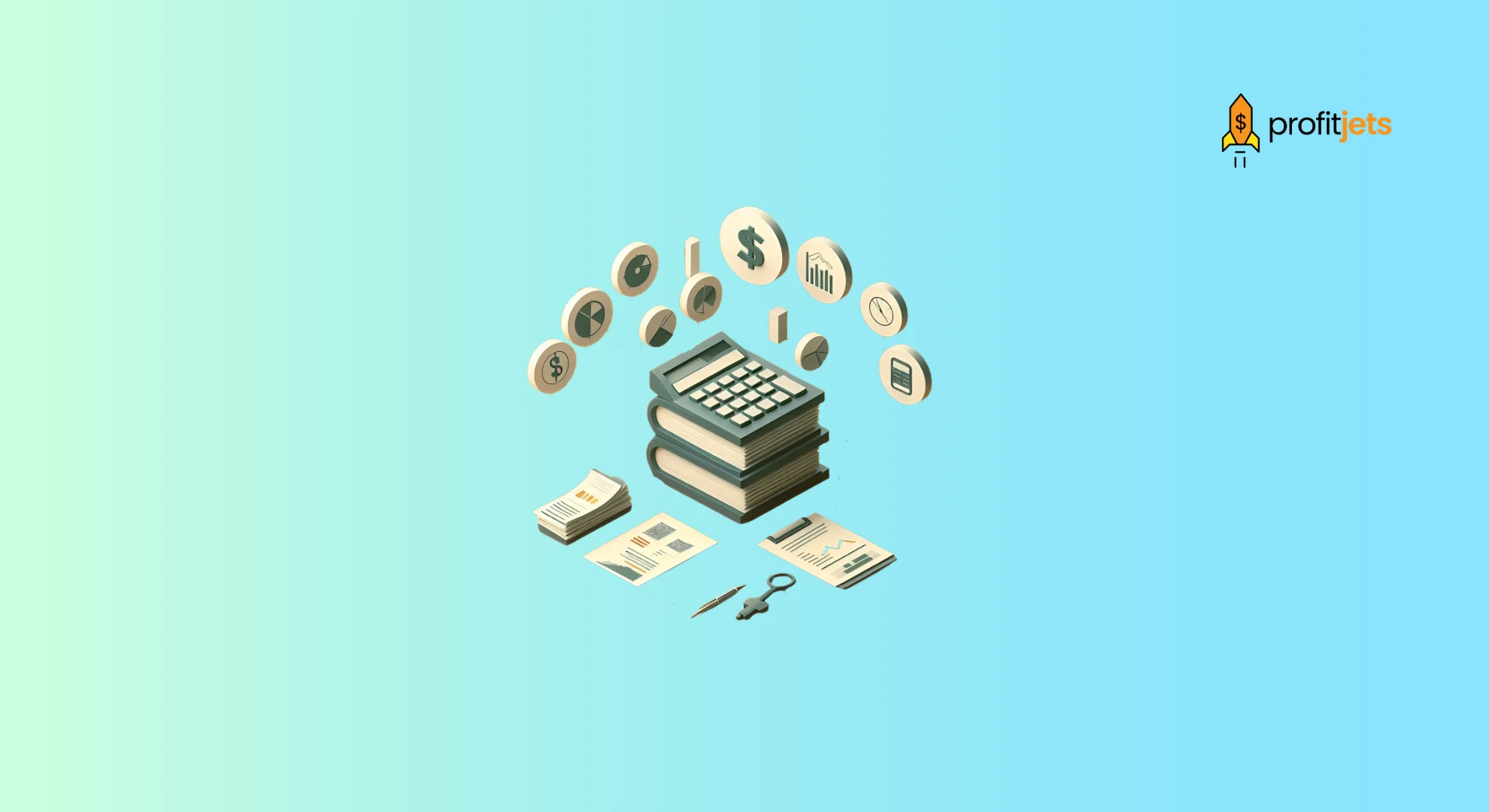Mastering the nuances of Accounts Receivable (AR) is crucial for any business aiming for smooth cash flow and financial stability. Whether you’re a seasoned entrepreneur or starting, understanding how to manage your total accounts receivables effectively is critical to ensuring your business thrives. This comprehensive guide dives deep into accounts receivable, providing you with all the knowledge and tools you need to conquer this essential aspect of financial management.
Table of Contents
Key Takeaways
- Your business has accounts receivable, which are the payments yet to be made for the goods or services provided on credit.
- Effective AR management is vital for optimizing cash flow, preventing lousy debt, and maintaining financial health.
- This comprehensive guide offers the accounts receivable process, from distinguishing between receivables and payables to executing effective tactics for expediting collections.
What is Accounts Receivable?
Accounts receivable (AR) is the balance of money due to a firm for goods or services delivered or used but not yet paid for by customers. Accounts receivable is listed on the balance sheet as a current asset. Any amount of money customers owe for purchases made on credit is AR.
How to calculate Accounts Receivable?
It is important to remember that accounts receivable isn’t simply a single calculation. It’s more of a concept and a balance sheet account representing money owed to your business. However, there are several calculations often used in conjunction with accounts receivable:
1. Accounts Receivable Balance:
This is the core calculation, simply reflecting the total amount customers owe your business at a specific time. It’s calculated by summing up all outstanding invoices and credit balances associated with customer purchases.
Formula:
Accounts Receivable Balance = Sum of all outstanding invoices + credit balances
Accounts Receivable Turnover Ratio:
This ratio measures the efficiency of your collection process, indicating how quickly customers pay their invoices. A higher ratio indicates faster collections and better cash flow.
Formula:
Accounts Receivable Turnover Ratio = Net Credit Sales / Average Accounts Receivable
Days Sales Outstanding (DSO):
This metric builds on the turnover ratio and calculates the average number of days it takes customers to pay their invoices. It helps identify potential issues with late payments and assess cash flow efficiency.
Formula:
DSO = 365 days / Accounts Receivable Turnover Ratio
Aging Schedule:
This report categorizes outstanding invoices by how long they’ve been unpaid, providing insights into collection challenges and areas for improvement. It helps prioritize collection efforts and identify chronically late-paying customers.
Remember:
These calculations should be applied based on your specific accounting period (e.g., monthly or quarterly).

Accounts Receivable: Process
The accounts receivable (AR) process might sound intimidating, but it’s simply the roadmap for converting credit sales into cold, hard cash. Here’s a quick breakdown:
- Setting Sail:
Credit Check: Assess customer trustworthiness to minimize bad debt.
Clear Policy: Establish credit terms, due dates, and late fees.
- Charting the Course:
Invoice Time: Send a detailed invoice outlining the transaction and payment details.
Record the Voyage: Log the invoice as an “account receivable” on your balance sheet.
- Reaching the Harbor:
Payment Arrives: Process customer payments, whether manually or through automation.
Matching the Map: Connect the payment to the correct invoice.
- Updating the Log:
Reduce the Debt: Update your records to reflect the decreased amount the customer owes.
- Staying on Course:
Monitor and Follow Up: Proactively track overdue invoices and send friendly reminders.
Have a Plan: Escalate persistent late payments with late fees or collection agencies if necessary.
- Double-Checking the Navigation:
Reconcile: Periodically ensure your AR records match your bank statements for accuracy.
By understanding these steps and optimizing your AR process, you can ensure smooth cash flow, strong customer relationships, and a thriving business.
Accounts Receivable Examples
Understanding accounts receivable involves recognizing situations where money is owed to your business for goods or services. Here are some common examples you might encounter in your day-to-day operations:
- A customer purchases office supplies on credit: Your company delivers the supplies to the customer, but they haven’t yet paid. The outstanding amount becomes an account receivable until the customer settles the invoice.
- A client hires your marketing agency for a website development project: You complete the project and send an invoice for your services. The unpaid invoice represents an account receivable until the client pays for your work.
- A tenant rents an apartment from your property management company: The rent due each month is an account receivable until the tenant makes their rental payment.
- A gym membership with automatic monthly billing: The upcoming monthly membership fee is considered an account receivable until automatically deducted from the member’s account.
- A utility company sends you a monthly bill for electricity: The outstanding balance on your utility bill is an account receivable for the utility company until you pay it.
These are just a few examples, and accounts receivable can arise in various business contexts. The key point is that any outstanding payment for goods or services you’ve already provided creates an account receivable for your business.
Accounts Receivable – Challenges
While accounts receivable (AR) are the lifeblood of credit-based businesses, managing them effectively can be like navigating a challenging whitewater rafting trip. Here are some of the most common issues you might encounter:
- Late Payments: This is the Everest of AR challenges. Customers paying late disrupt your cash flow, impacting your ability to pay bills, invest, and grow.
- Manual Processes: Inefficient, paper-based invoicing, payment processing, and reconciliation are time-consuming and prone to errors, hindering efficiency and increasing costs.
- Lack of Credit Policies: Unclear or non-existent credit policies lead to inconsistent approvals, increased risk of bad debt, and difficulty collecting payments.
- Ineffective Communication: Customer communication regarding invoices, due dates, late fees, and collection efforts can help relationships and ensure prompt settlements.
- Technology Gaps: Lack of automation tools or outdated AR software can slow processes, limit data insights, and make accurate reporting difficult.
- Unclear Ownership: When different departments handle parts of the AR process, accountability gets blurred, leading to delays and inefficiencies.
- Insufficient Resources: Understaffed AR teams struggle to cope with workload, leading to backlogs, delayed collections, and frustration.
- Security Risks: Manual processes and data silos increase vulnerability to fraud and cyberattacks, jeopardizing financial security.
- Industry-Specific Challenges: Different industries face unique AR issues, such as complex sales cycles, long payment terms, or specific regulatory requirements.
- Global Expansion: Managing AR across different time zones, currencies, and regulations adds complexity and potential compliance hurdles.
Accounts Receivable Factoring: What is it?
When your business extends credit to customers, you essentially grant them a short-term loan. While this can fuel sales and growth, waiting for those payments can strain cash flow. That’s where accounts receivable factoring comes in, offering a unique solution to bridge the gap.
Imagine selling your unpaid invoices to a third-party financial institution called a “factor.” The factor advances you a percentage (usually 70-80%) of the invoice value upfront, minus a factoring fee. You convert your future receivables into immediate cash, alleviating cash flow concerns and boosting your financial flexibility.
Accounts Receivable vs. Accounts Payable: Major Differences
Understanding Accounts Receivable:
Think of accounts receivable as your piggy bank of “I owe yous.” These are the money amounts customers owe your business for credit purchases of goods or services. They’re listed as current assets on your balance sheet, representing potential future cash flow.
Key Points:
- Increases when you sell on credit
- Decreases when customers pay
- Represents money owed to you
- Contributes to your working capital
Understanding Accounts Payable:
Conversely, accounts payable are your “I owe them” list. These are the amounts you owe suppliers for credit purchases of goods or services you’ve received. They’re listed as current liabilities on your balance sheet, representing short-term obligations.
Key Points:
- Increases when you buy on credit
- Decreases when you pay suppliers
- Represents money you owe to others
- Impacts your cash flow and financial stability
| Feature | Accounts Receivable | Accounts Payable |
| Who owes money? | Customers | Suppliers |
| Nature of transaction | Credit sales | Credit purchases |
| Impact on balance sheet? | Current aset | Current Liability |
| Financial objective | Collect payments | Pay invoices on time |
Why is Accounts Receivable important?
Cash Flow Engine: Efficient AR management ensures steady cash flow, fueling your business operations and growth.
Financial Health: Faster collections improve your working capital, enabling you to invest in inventory, marketing, and expansion.
Reduced Bad Debt: Effective AR strategies minimize the risk of unpaid invoices turning into bad debt, safeguarding your bottom line.
How to Record Accounts Payable
Debit the “account receivable” account and credit the “sales” revenue account when making a sale on credit. As customer payments arrive, debit the “cash” account and credit the “account receivable” account, reducing the balance owed.
ERP finance module for Accounts Receivable Automation
Modern Enterprise Resource Planning (ERP) systems help automate the AR process, from invoicing and payment tracking to generating aging reports and managing collections.
What happens to the accounts if clients never pay?
Bad Debt: Unpaid invoices might be written off as bad debt after a certain period, impacting your profits and taxable income.
Collection Agencies: Engaging collection agencies can help recover some bad debts, but it incurs additional costs and can damage customer relationships.
Closing Thoughts
Compelling accounts receivable management is a cornerstone of sound financial health for any business. By understanding the AR process, implementing practical collection strategies, and utilizing helpful tools like aging schedules and automation software, you can optimize your company’s cash flow, reduce bad debt, and fuel your company’s business growth. Remember:
- Cash is king: Prioritize timely collections to maintain positive cash flow and avoid financial strain.
- Communication is vital: Maintain an open dialogue with customers to prevent misunderstandings and facilitate prompt payments.
- Stay adaptable: Adjust your collection strategies based on customer behavior and economic conditions.
- Seek professional advice: Consult financial advisors or accounting professionals for further guidance and tailored solutions.
You can unlock your business’s full potential and confidently navigate your financial journey by taking control of your accounts receivable and actively managing your cash flow.

FAQs on Accounts Receivable
How to find Accounts Receivable?
Accounts Receivable is typically listed as a current asset on the company’s balance sheet. The Accounts Receivable aging report provides a detailed breakdown of outstanding customer invoices. The general ledger accounts will show the total Accounts Receivable balance and any individual customer or client balances.
How are accounts receivable classified?
Accounts receivable are classified as current assets on a company’s balance sheet. They represent the money owed to the company by customers for goods or services provided on credit. Accounts receivable are considered short-term, as they are typically expected to be collected within one year or the normal operating cycle of the business, whichever is longer.
What is Accounts Receivable on a balance sheet?
Accounts Receivable is listed as a current asset on a company’s balance sheet. It represents the money owed to the company by customers for goods or services provided on credit. Accounts Receivable is a short-term asset, as the amounts are typically expected to be collected within one year or the normal operating cycle of the business.
Is Accounts Receivable an asset or liability?
Accounts Receivable is considered a short-term asset, as the amounts are typically expected to be collected within one year or the normal operating cycle.
Is Accounts Receivable a debit or credit?
Accounts Receivable is recorded as a debit on a company’s balance sheet.
What is the Accounts Receivable turnover ratio formula?
The Accounts Receivable Turnover Ratio formula is:
Accounts Receivable Turnover = Net Credit Sales / Average Accounts Receivable
This ratio measures how efficiently a company manages and collects its accounts receivable. A higher ratio indicates the company is collecting receivables more quickly.
What is the format for aging accounts receivable?
The format of an Accounts Receivable Aging Report typically includes:
- Customer Name
- Invoice Date
- Invoice Amount
- Current (0-30 days)
- 31-60 days
- 61-90 days
- Over 90 days
- Total Outstanding Balance
This report provides a detailed breakdown of a company’s outstanding customer invoices by their due dates, allowing it to monitor and manage its accounts receivable more effectively.
When does Accounts Receivable decrease?
Accounts Receivable decreases when:
- Customers pay their outstanding invoices, reducing the total amount owed to the company.
- The company writes off uncollectible accounts as bad debt expenses.
- Customers are given discounts or credits, which reduces the total Accounts Receivable balance.
Accounts Receivable generally decrease when the company collects customer payments or makes adjustments to reduce the total amount owed.
Benefits of Automating Accounts Receivable
Automated AR processes improve efficiency, enhance cash flow, and reduce errors. It also provides better visibility into receivables and increases customer satisfaction through streamlined invoicing and payment options.
How to pull Accounts Receivable Reports
To pull Accounts Receivable reports:
Access the accounting software or ERP system and navigate to the Accounts Receivable module.
Generate reports such as the Accounts Receivable Aging Report, Customer Statements, and Accounts Receivable Ledger to get detailed information on outstanding customer invoices.
Notes Receivable vs Accounts Receivable – Main Differences
Notes Receivable are formal written promises to pay, while Accounts Receivable are informal outstanding customer invoices. Notes Receivable typically have a longer repayment timeline than the short-term nature of Accounts Receivable.
Best Accounts Receivable software of 2024
Intuit QuickBooks and Xero are leading cloud-based AR solutions that provide invoicing, payment processing, and reporting capabilities. FreshBooks is another popular AR software known for its user-friendly interface and robust features.










